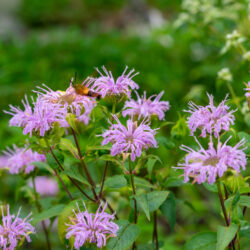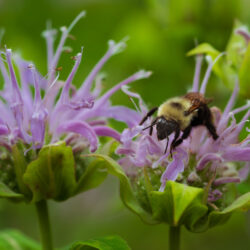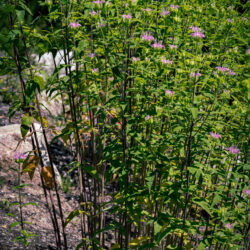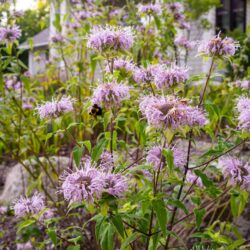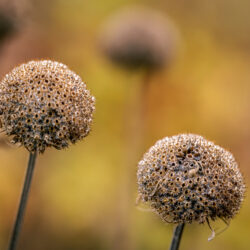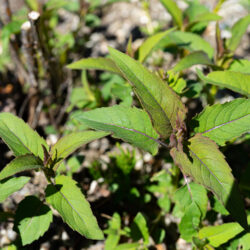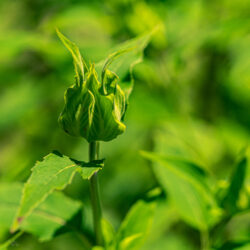Etymology
Monarda is Latin, to honor Nicolas Monardes (1493-1588), a Spanish physician/botanist; fistulosa is Latin for tubular, referring to the fused flower petals.
Native Habitat
Dry open woods, fields, wet meadows and ditches, and at the edges of woods and marshes.
Garden Uses
Perfect for both sunny mixed borders and naturalized fields, and part-shade woodland edges. Bee balm is hardy and fragrant, but subject to powdery mildew, which can be prevented with good drainage and air circulation.
Overview
This species displays clusters of mostly lavender, but occasionally white to pink, flowers at the top of open branched stems up to 5-feet tall. Adaptable, its preferred habitat includes both dry, open, sunny fields and moist, well-drained meadows and woodland edges in part-shade, where it spreads via slender, creeping rhizomes to colorful groupings.
Leaves and Stems
An attractive gray-green, the leaves are simple, lance-shaped, opposite (two per node along the stem), serrated or toothed, and 2-3 inches long. Fragrant foliage has smooth surface with hairy margins. Stems are erect, sparsely hairy, and branched.
Flowers
Flowers grow in head-like clusters singly at the stem tips. Each 2-4 inch head contains 50-70 single flowers, which are bilaterally symmetrical. Each flower on the head includes 4 usually lavender petals, each fused into a tube, and up to 1/2 inch long. Two stamens extend from center, with a style also extending over 1 inch. Fine hairs cover much of the structures of the head, resulting in an overall slightly ragged pom-pom effect.
Fruit/Seed
Dry nutlets are brown to black, less than 1/4 inch long, and do not split open. Seed can often be collected late into the season from stems left standing.
Wildlife Associates
Attractive to native bees, bumble bees, birds, hummingbirds, butterflies.
Propagation
Root division; lifting and dividing rhizome clumps every 3 years can help maintain plant vigor. Seeds can easily be started without cold stratification. Naturally will seed iteself around the garden.
Ethnobotanical Uses
The aromatic leaves have traditionally been used for teas thought to help treat respiratory ailments.
Garden Location
Performance Hall Garden, Residential Garden (see garden map)
Anecdotal Information
Pinching back some stems in early summer can delay bloom time and produce a tidy clump when restricted to the stems at the perimeter of the clump.
Sources
Lady Bird Johnson Wildflower Center
Plant Profile by Kate O’Dell

